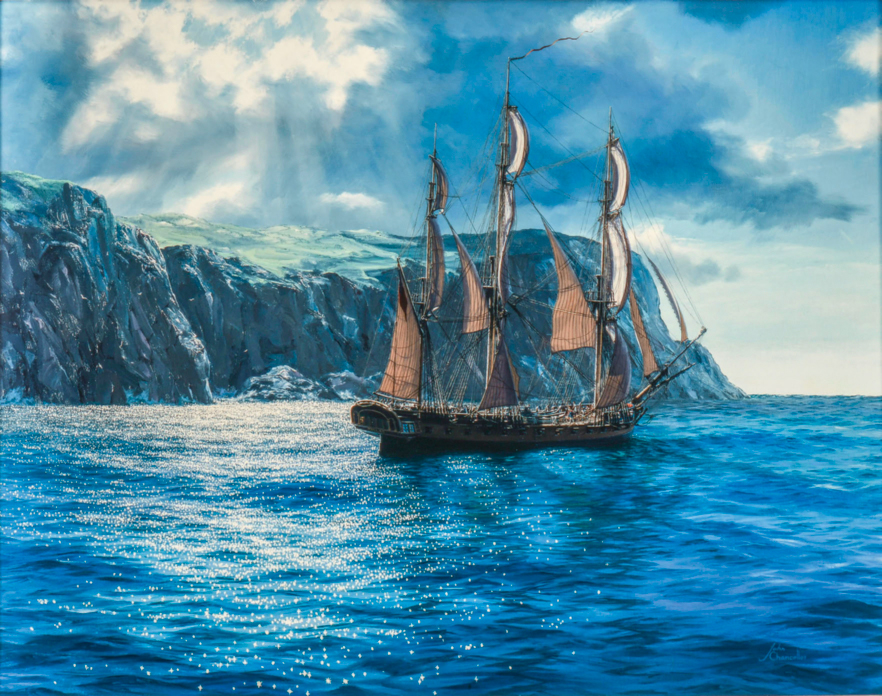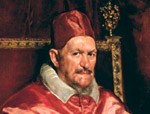My favourite painting: Mark Dowie
Mark Dowie of the RNLI makes an appropriately nautical choice: Cochrane’s Compensation by John Chancellor.


Mark Dowie on his choice of Cochrane’s Compensation by John Chancellor
'My choice of a sea painting is predictable! I have had a fascination with all things nautical since turning the first page of Mr Midshipman Hornblower at the age of 10. From then, it was inevitable that I would start my working life in the Royal Navy.
'At the other end of my career, I remain firmly attached to the sea at the helm of the RNLI. I love the exquisite detail here: the light and the feeling of what is to come just beyond the next headland. Chancellor’s skill with the brush and his meticulous research take me to the quarterdeck of a Royal Navy frigate off the Azores in 1804 — a good place to be.'
Mark Dowie is chief executive of the RNLI and a former naval officer and company director. He served as Lifeboat Operations Manager at Salcombe Lifeboat Station, Devon, for two years.
John McEwen comments on Cochrane’s Compensation
John Chancellor's naval hero was Thomas Cochrane, 10th Earl of Dundonald — called Le Loup des Mers by Napoleon — a hero of the Napoleonic Wars, founder and commander of the navies of Chile and Brazil, an instigator of Peruvian independence and an inspirer of C. S. Forester’s Horatio Hornblower and Patrick O’Brian’s Jack Aubrey. Chancellor was ‘closer to the stereotype seaman than the artist, which is how he would wish it’.
Born in Portugal, his father was an international lawyer, his mother a commercial artist. At six, he returned to England, to attend Wycliffe College in Gloucestershire and the London Polytechnic Art School. As a merchant seaman in the Second World War, he survived two torpedo attacks. After the war, he joined a tug and barge company before owning a trawler. He later converted a French vessel for hydrographic work.
Chancellor won boyhood medals from The Drawing Society, but it was not until 1973 that he exhibited his marine paintings, all of which sold at the preview. He provided an explanation of each picture. Of Cochrane’s Compensation, he wrote that, in 1801, Cochrane’s capture of 50 ships off Spain with a small brig was ‘one of the most brilliant single-ship campaigns ever recorded’.
A dispute with the Admiralty denied Cochrane promotion to command a frigate, which did not come till 1804 when Viscount Melville, a fellow Scot, instructed him by Admiralty letter to intercept enemy shipping off the Azores in the frigate Pallas. The letter meant prize money went to the ship’s company. Two valuable prizes earned him a fortune. This painting shows Pallas closing on the Azores island of St Maria, where the crews of the two enemy ships were disembarked.

Jools Holland’s Favourite Painting
Jools Holland introduces his favourite painting – Tulip petal number 3

Stephen Fry’s favourite painting
Stephen Fry shares why he loves this famous Velázquez painting of Pope Innocent X
Sign up for the Country Life Newsletter
Exquisite houses, the beauty of Nature, and how to get the most from your life, straight to your inbox.
Country Life is unlike any other magazine: the only glossy weekly on the newsstand and the only magazine that has been guest-edited by HRH The King not once, but twice. It is a celebration of modern rural life and all its diverse joys and pleasures — that was first published in Queen Victoria's Diamond Jubilee year. Our eclectic mixture of witty and informative content — from the most up-to-date property news and commentary and a coveted glimpse inside some of the UK's best houses and gardens, to gardening, the arts and interior design, written by experts in their field — still cannot be found in print or online, anywhere else.
-
 Two quick and easy seasonal asparagus recipes to try this Easter Weekend
Two quick and easy seasonal asparagus recipes to try this Easter WeekendAsparagus has royal roots — it was once a favourite of Madame de Pompadour.
By Melanie Johnson
-
 Sip tea and laugh at your neighbours in this seaside Norfolk home with a watchtower
Sip tea and laugh at your neighbours in this seaside Norfolk home with a watchtowerOn Cliff Hill in Gorleston, one home is taller than all the others. It could be yours.
By James Fisher
-
 'As a child I wanted to snuggle up with the dogs and be part of it': Alexia Robinson chooses her favourite painting
'As a child I wanted to snuggle up with the dogs and be part of it': Alexia Robinson chooses her favourite paintingAlexia Robinson, founder of Love British Food, chooses an Edwin Landseer classic.
By Charlotte Mullins
-
 The Pre-Raphaelite painter who swapped 'willowy, nubile women' for stained glass — and created some of the best examples in Britain
The Pre-Raphaelite painter who swapped 'willowy, nubile women' for stained glass — and created some of the best examples in BritainThe painter Edward Burne-Jones turned from paint to glass for much of his career. James Hughes, director of the Victorian Society, chooses a glass masterpiece by Burne-Jones as his favourite 'painting'.
By Charlotte Mullins
-
 'I can’t look away. I’m captivated': The painter who takes years over each portrait, with the only guarantee being that it won't look like the subject
'I can’t look away. I’m captivated': The painter who takes years over each portrait, with the only guarantee being that it won't look like the subjectFor Country Life's My Favourite Painting slot, the writer Emily Howes chooses a work by a daring and challenging artist: Frank Auerbach.
By Toby Keel
-
 My Favourite Painting: Rob Houchen
My Favourite Painting: Rob HouchenThe actor Rob Houchen chooses a bold and challenging Egon Schiele work.
By Charlotte Mullins
-
 My Favourite Painting: Jeremy Clarkson
My Favourite Painting: Jeremy Clarkson'That's why this is my favourite painting. Because it invites you to imagine'
By Charlotte Mullins
-
 The chair of the National Gallery names his favourite from among the 2,300 masterpieces — and it will come as a bit of a shock
The chair of the National Gallery names his favourite from among the 2,300 masterpieces — and it will come as a bit of a shockAs the National Gallery turns 200, the chair of its board of trustees, John Booth, chooses his favourite painting.
By Toby Keel
-
 'A wonderful reminder of what the countryside could and should be': The 200-year-old watercolour of a world fast disappearing
'A wonderful reminder of what the countryside could and should be': The 200-year-old watercolour of a world fast disappearingChristopher Price of the Rare Breed Survival Trust on the bucolic beauty of The Magic Apple Tree by Samuel Palmer, which he nominates as his favourite painting.
By Charlotte Mullins
-
 My favourite painting: Andrew Graham-Dixon
My favourite painting: Andrew Graham-Dixon'Lesson Number One: it’s the pictures that baffle and tantalise you that stay in the mind forever .'
By Country Life